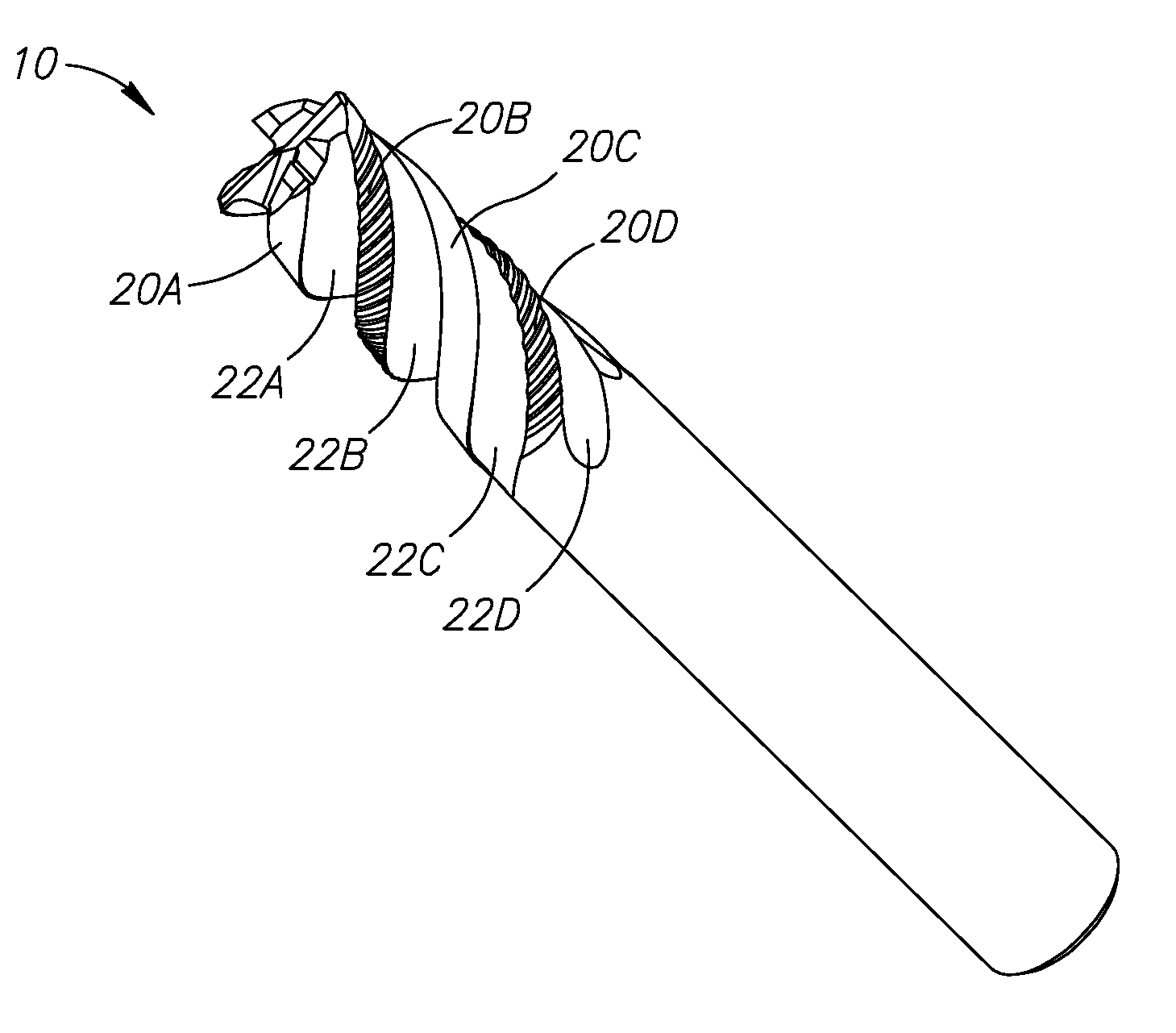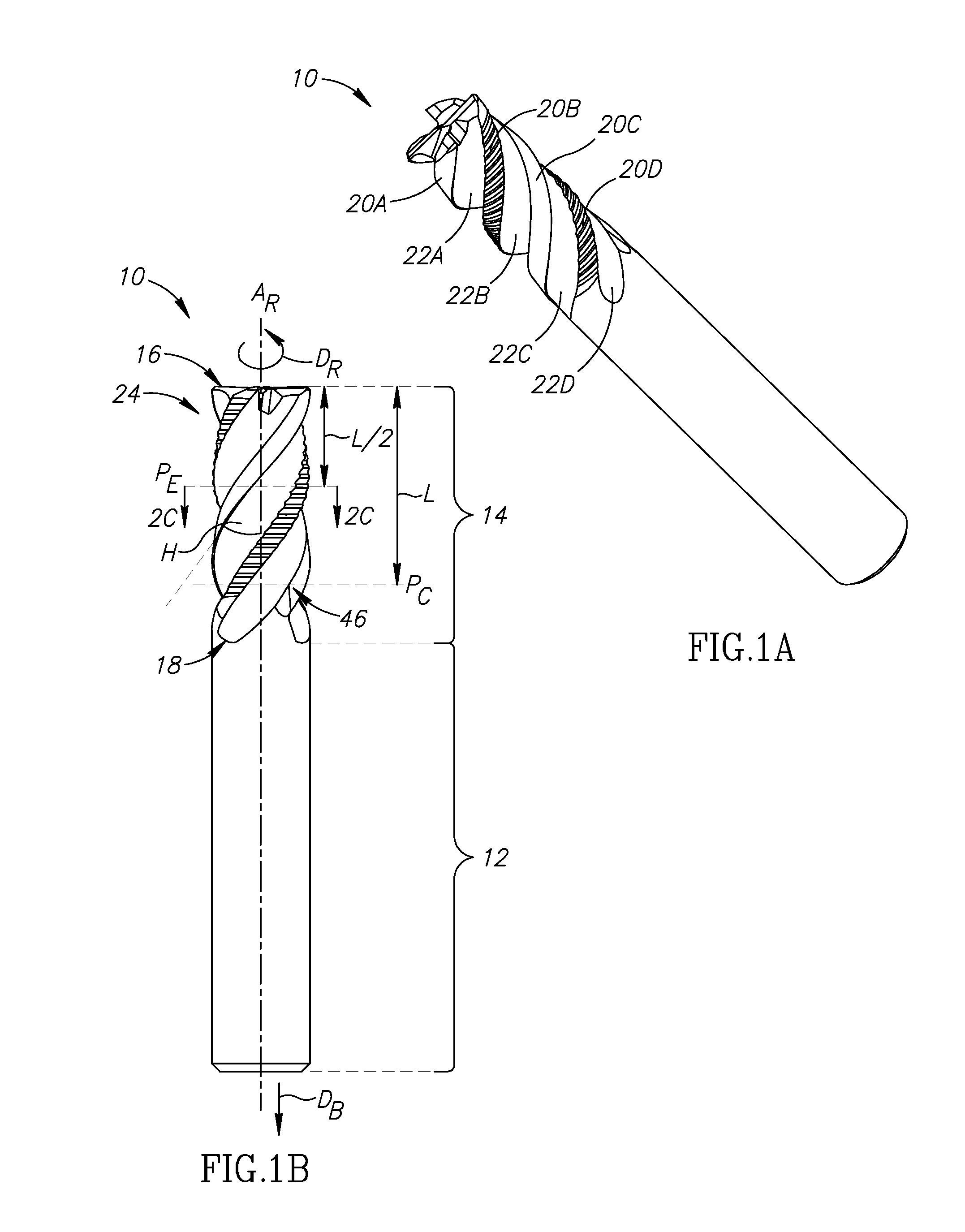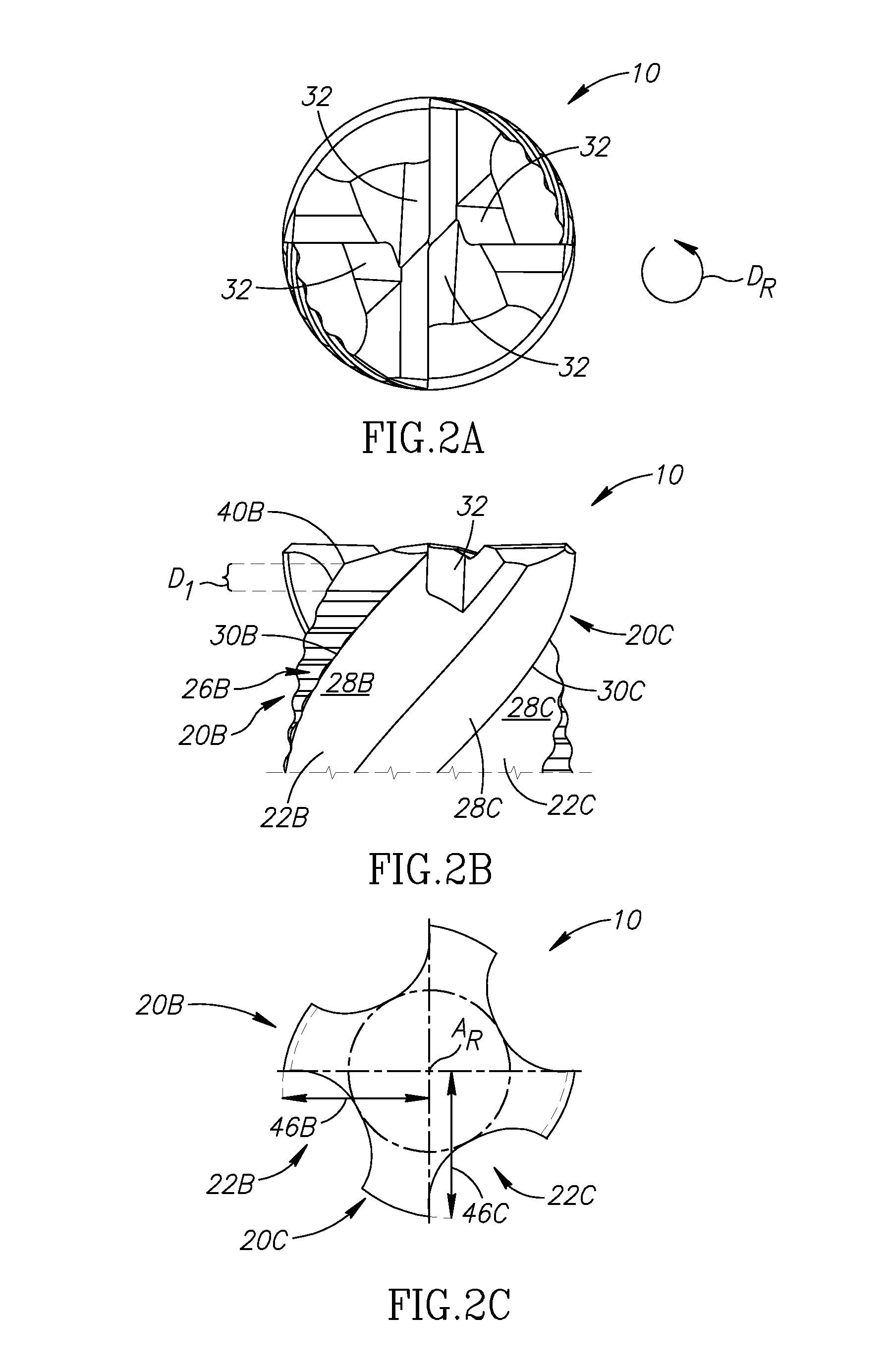Roughing and Semi-Finishing End Mill Having Serrated and Non-Serrated Cutting Teeth
a technology of cutting teeth and end mills, which is applied in the field of end mills to achieve the effects of reducing chatter, cost-effectiveness, and increasing chatter
- Summary
- Abstract
- Description
- Claims
- Application Information
AI Technical Summary
Benefits of technology
Problems solved by technology
Method used
Image
Examples
Embodiment Construction
[0045]Reference is made to FIGS. 1A and 1B, which illustrate a roughing and semi-finishing end mill 10, typically made of extremely hard and wear-resistant material such as cemented carbide, configured to rotate about a rotation axis (AR) extending longitudinally through the center thereof in a counter-clockwise direction DR in the view shown in FIG. 2A.
[0046]The end mill 10 comprises a shank portion 12 and a cutting portion 14 extending therefrom.
[0047]More precisely, the cutting portion 14 extends along the rotation axis AR in a rearward axial direction DB from a cutting end face 16 to a furthermost flute end 18.
[0048]The cutting portion 14 is integrally formed with at least one cutting tooth 20A, 20B, 20C, 20D and at least one flute 22A, 22B, 22C, 22D.
[0049]The flutes 22A, 22B, 22C, 22D can be helical flutes. The flutes can all have the same constant helix angle H. In this non-limiting example, the helix angle H is about 45°, which has been found to be an effective value when mac...
PUM
 Login to View More
Login to View More Abstract
Description
Claims
Application Information
 Login to View More
Login to View More - R&D
- Intellectual Property
- Life Sciences
- Materials
- Tech Scout
- Unparalleled Data Quality
- Higher Quality Content
- 60% Fewer Hallucinations
Browse by: Latest US Patents, China's latest patents, Technical Efficacy Thesaurus, Application Domain, Technology Topic, Popular Technical Reports.
© 2025 PatSnap. All rights reserved.Legal|Privacy policy|Modern Slavery Act Transparency Statement|Sitemap|About US| Contact US: help@patsnap.com



